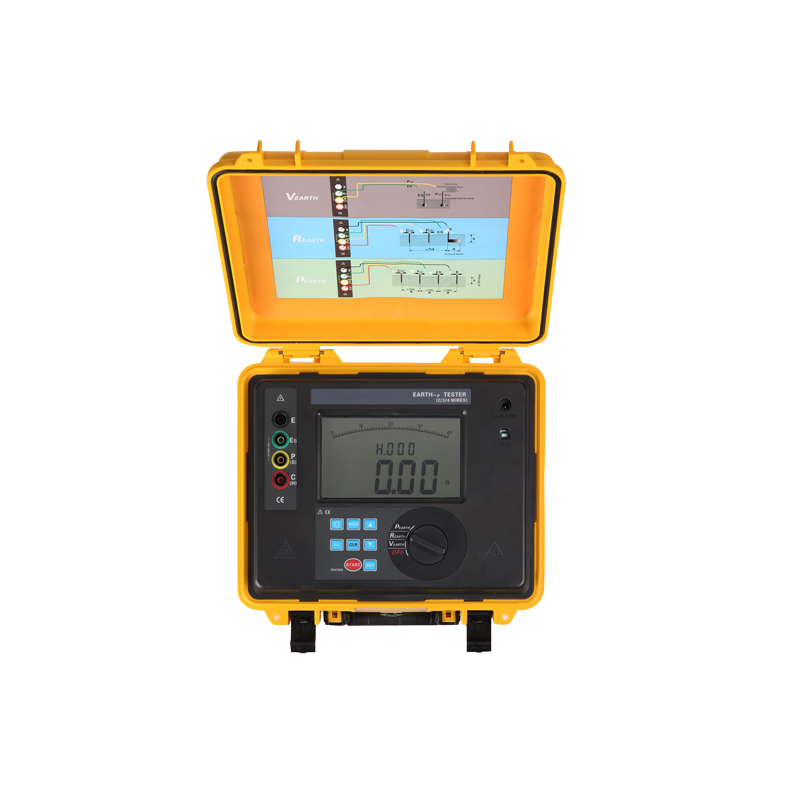In sandy and stony soils with high earth resistivity, a grounding network composed of multiple grounding bodies in parallel is often used to meet the requirement of low grounding resistance. But sometimes a lot of steel is used and the ground area is large. It is often difficult to achieve the required ground resistance.
In this case, the earth resistivity of the soil near the grounding body can be reduced, and the purpose of reducing the grounding resistance can also be achieved. How to use a ground resistance tester in harsh environments? It is recommended to try the following methods.

GDCR3100C Ground Resistance Tester
1. Use soil with low resistance coefficient (that is, soil change method).
Soils with a high resistance coefficient can be replaced by clay, peat, black clay and sandy clay, as well as coke and charcoal if necessary. The replacement range should be less than 1 to 2m around the grounding body and less than 1/3 of the length of the near-ground grounding electrode. After this treatment, the ground resistance can be reduced to about 3/5 of the original.
2, the use of salt and other artificial treatment methods
Salt, cinder, carbon dust, furnace ash, coke ash, etc. are added to the soil around the grounding body to improve the electrical conductivity of the soil. Because salt has a good effect on increasing the soil resistance coefficient, it is less affected by seasonal changes and has low price.
3. Use external grounding
Especially in hilly areas, when the grounding resistance value is small and it is difficult to reach the ground, if there is a water source or soil with low resistivity nearby, it can be used to make grounding electrodes or lay underwater grounding nets. The ground wire (such as a flat steel strip) is then used as the external ground. However, the ground resistance tester needs to pay attention to is that the external grounding device should avoid the sidewalk to prevent stepping voltage shock; When crossing the highway, the outer lead buried depth should be greater than or equal to 0.8m.
4. Conductive concrete
Carbon fiber is mixed into the cement to be used as a grounding electrode. For example, about 100 kilograms of carbon fiber is mixed into 1 cubic meter of cement to make a hemispherical (1 meter in diameter) ground electrode. Measured, its power frequency grounding resistance (compared with ordinary concrete) can usually be reduced by about 30%. This method is often used in lightning protection and grounding devices. In order to further reduce the impact grounding resistance value, the needle ground electrode can also be buried in the conductive concrete at the same time, so that the discharge corona from the needle tip and carbon fiber continuous fluctuation, grounding has a significant role. The impact grounding resistance is affected and reduced.
5, Chemical treatment of resistance reduction agent
The reducing agent with carbon powder and quicklime as the main raw materials does not contain dielectric, will not be lost by groundwater, and can be used in soil for a long time. As a result, long-term pollution-free, stable low ground resistance (about 1/2 lower than before treating the soil with a resistive agent) can be obtained. For hard rock strip, the method of adding or reducing inhibitors in the buried wire is very effective, and the ground resistance tester can reduce the ground resistance by about 40% compared to the buried wire alone. This method can obtain good results by spraying powdered drag reducer or long-acting drag reducer in the trench excavated and laid ground, and then backfilling the old soil.
Post time: Dec-20-2023
